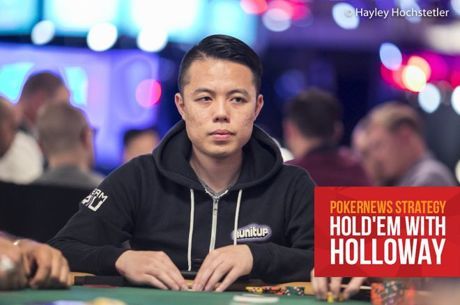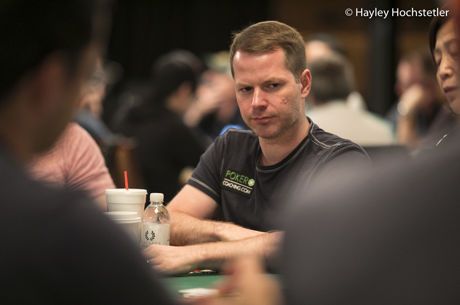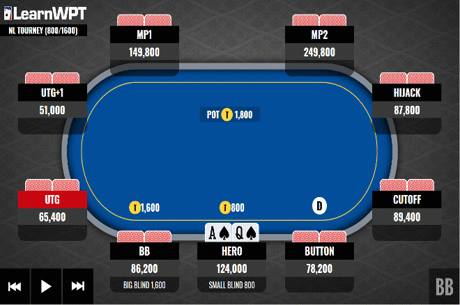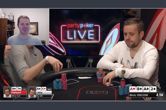Call or Fold? On the Relationship Between Blockers and Bluff Catchers
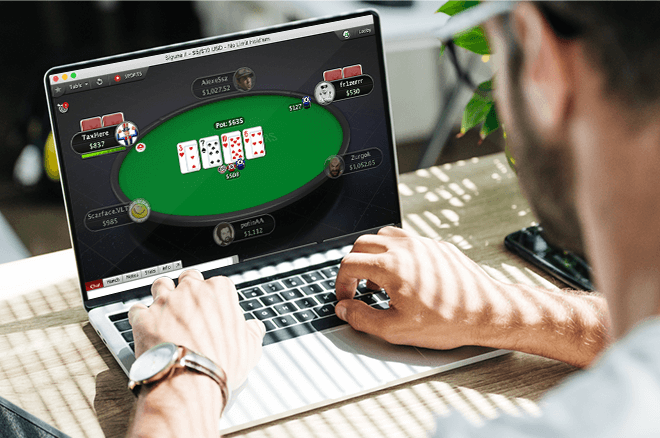
When you've reached the end of a no-limit hold'em hand and your opponent makes a bet that could either be for value or a bluff, consider not just the strength of your own hand, but also how those cards you are holding can work as blockers that narrow the range of what your opponent might have.
When your opponent has either a bluff or a big hand, whether you have one pair, or two, or even three of a kind can sometimes be less important than the way your cards help discount the possibility of your opponent having a value hand, or help discount the possibility of your opponent having a bluff. Your cards can work both ways and it is important for you to consider both.
Here's an example of a hand of six-handed 100NL played online that illustrates how a player's own cards can help reduce possibilities when it comes to figuring out what an opponent might have.
Three to the Flop
The hand began with a raise to $3 (3x the big blind) from the cutoff. The raise came from an eager player who had just moved up and was taking a shot at higher stakes, having recently joined the game with a fresh $100 stack. A more experienced player who had been playing this game every day for years then three-bet to $9.
Things got a bit more complicated when the small blind cold-called, playing a deeper stack. The cutoff player decided to come along, too, meaning that barring some exceptional read or trepidation he probably did not hold A-A, K-K, Q-Q, or A-K.
Leading Out
The flop came Q♣10♦9♠ and the small blind checked. The cutoff player led out into the button, betting $13.30 into a little over $25. The button three-bettor decided to call and the small blind was clearly speculating a little before the flop because he folded.
After a Broadway-friendly flop such as Q-T-9 rainbow, it makes sense for the cutoff to represent having something with a bet, whether he has connected in a big way or not.
Because three players saw the flop, the button is unlikely to bet with great frequency, or more practically speaking, bluff with great frequency. He will perceive both of his opponents to have hands like A-Q, K-Q, Q-J, K-J, T-T, and 9-9, all of which can dissuade continuation betting.
In other words, if the cutoff checks, the button is unlikely to bluff 7-6-suited or A-5 and might check back a hand like A-9 that could be pressured to fold now or on future streets.
Heads-Up to the Turn
This showdown between the plucky amateur and the experienced veteran took a distinct turn when the K♦ arrived, making the board Q♣10♦9♠K♦. Now the cutoff decided to check and the button took the opportunity to bet — $21.20 (about 40 percent of the pot). The cutoff called.
If we are thinking about the cutoff's overall range, he should check some J-x hands on this turn in order to protect the other hands — T-T and A-Q, for example — that would rather not face two large bets from out of position going forward.
When the cutoff checks and calls, it is clear he "has something." And when the button bets, it is hard for him to have a bluff on account of his flat-call on the flop when another player was left to act behind.
Tricky Rivers
The river was the 5♦. Final board Q♣10♦9♠K♦5♦.
One thing to note: If the button's bluff frequency on the K-Q-T-9 board was low on the turn, one of the principal bluffs would be a diamond draw like 9♦8♦. Diamonds have now gotten there, so the button now has to have even more obscure bluffs, such as A♦10x.
I mention this, of course, because the cutoff checked and the button moved all in for $56 effective. The pot was about $105 going into the river, so the price being laid to the cutoff was a good one.
Remember that the cutoff should have some J-x hands already from the turn. These will more or less always be calling, not just because they block J-x value, but because of the price and their showdown value (they chop with the majority of value shoves and lose to 9 combos of A-J).
Here's a point this hand is showing us, and one worth remembering regarding both bluff catchers and blockers — the worst bluff catchers will be hands that block bluffs.
It should not require too much explaining that the button's most likely cards to be bluffing with are hands with a nine or a ten in them — the button knows he cannot win at showdown with a pair of nines or tens on this board given the action. Nines and tens also happen to be cards that would make up the worst hands with which the cutoff could bluff catch.
We can take this principle a step further as we try to figure out the likelihood the button is value betting. It is a bit counterintuitive, but hands that the cutoff should call with on the turn — T-T and 9-9, which also make sense to lead out with as he did — also make the most sense to fold on the river.
Sure, those hands are stronger than K-Q or A♦Qx (the latter blocking that backdoor flush), but they eliminate the most likely bluffs from the button's hand, and facing this action, all those hands are really equal in hand strength — that is, they all only beat a bluff.
The cutoff did call in this instance with 10♥10♣ (a set) and got shown the bad news as the button had J♣J♦ (a straight). It was a common story in poker — a double-reversal of fortunes. But if we take a step back, the cutoff could have walked away from this intense hand with $56 instead of $0.

